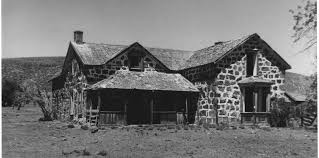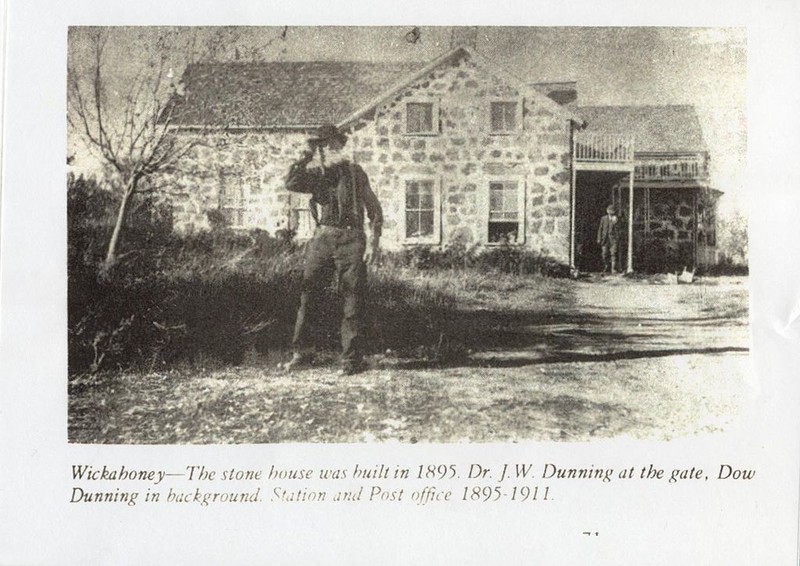Wickahoney Post Office and Stage Station
Introduction
Text-to-speech Audio
Images
Wlckahoney Post Office, Wickahoney, Owyhee County, Idaho. Photograph by Larry Jones (1976). Image thanks to the Idaho State Historical Society.

Wickahoney Post Office and Stage Station, (~1909), photographer unknown.

Backstory and Context
Text-to-speech Audio
Importance of the Wickahoney Post Office and Stage Station
The Wickahoney Post Office and Stage Station was once the central landmark of the Wickahoney community. In essence, the Stage Station was a much-needed relief point for the stagecoaches heading from Mountain View, ID to Mountain City, NV, but it also served as a flag for lost travelers crossing the high desert landscape of Owyhee County. In fact, on a nearby hilltop, one of the sons who inherited the post office would eventually build a six-foot cairn so that people on the other side, who might be lost or trying to find Wickahoney, could enjoy a point of reference.
Dow Dunning homesteaded the property between 1895 and 1911, and he also constructed some of the local buildings while serving as the postmaster. At the time of its construction, Dunning and other settlers felt that Wickahoney would grow into a prosperous town. The route never brought the traffic that Dunning and others hoped for, and most travelers on the route were porting supplies to the mines further south. The route that passed through Elko, NV, would eventually prosper and become a major throughway. The flawed location of the Post Office, therefore, led to the failure of the Wickahoney community. Nonetheless, because of its isolation, the Post Office has remained surprisingly well-preserved, despite its natural deterioration.1
Stagecoach Routes in Idaho
As the story of the Wickahoney Post Office and Stage Station shows, attempts at forming a community in the high deserts of Idaho was a frail affair. In this case, it was the ease of another route that led to the abandonment of a town that held high aspirations for its economic future. At the same time, however, the residents of Wickahoney did not cater naive ambitions. Until railroads become commonplace in rural areas of Idaho, stagecoaches were the most important form of overland travel. Stage stations connected frontier towns with long-established communities, and they were indispensable in feeding and providing shelter to weary travelers on the high desert landscapes. Moreover, the routes (and consequently the Stage Stations) brought a range of passengers and other supplies, giving shop owners and other locals a constant stream of potential customers.
The route through Wickahoney did not bring the passengers and supplies needed for the town to survive. Two of the main stagecoach lines through Idaho, however, included the 675-mile route from Salt Lake City, Utah to The Dallas, Oregon (which passed through Boise) as well as the line from Salt Lake City to Virginia City, Montana. Many towns on these routes thrive to this day.2
Cite This Entry
Newcomer, Daniel. "Wickahoney Post Office and Stage Station." Clio: Your Guide to History. January 31, 2016. Accessed April 5, 2025. https://theclio.com/entry/21438

